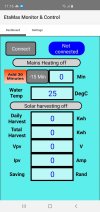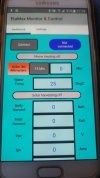DannyMarom
Member
Hi All
Regrets, i looks like the AutoScale issue was discussed and should work.
However, I got a simple app where the AutoScale is nor working properly on all other devices:
1, The design is done using the Samsung A22 5G with screen resolution of 1080 x 2408 pixels.
2. All the views are standard that come with the basic package, the "AutoScaleAll" directive is present on all pages.
3. When installing the App to other devices, we sometime get cut screen and/or not proportional text size.
4. See attached pics of the original design and of the App installed on S6 and S23 handsets.
5. Also attached are the project files clear of the logic.
What are we doing wrong?
Thanks in advance
Regrets, i looks like the AutoScale issue was discussed and should work.
However, I got a simple app where the AutoScale is nor working properly on all other devices:
1, The design is done using the Samsung A22 5G with screen resolution of 1080 x 2408 pixels.
2. All the views are standard that come with the basic package, the "AutoScaleAll" directive is present on all pages.
3. When installing the App to other devices, we sometime get cut screen and/or not proportional text size.
4. See attached pics of the original design and of the App installed on S6 and S23 handsets.
5. Also attached are the project files clear of the logic.
What are we doing wrong?
Thanks in advance


